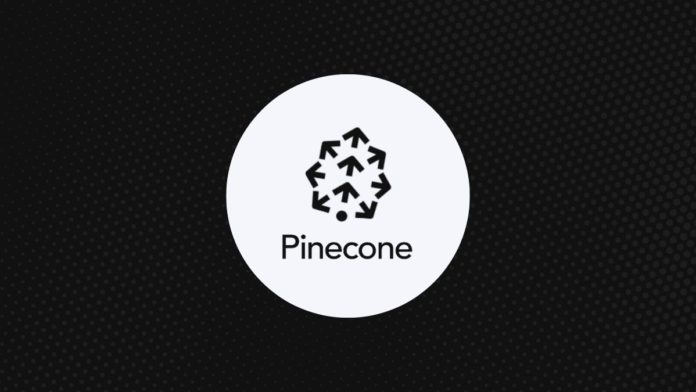Due to the increasing digitization across industries, large volumes of unstructured data are generated daily. This data includes text, images, videos, and audio, which don’t conform to conventional, organized formats such as tables or databases. Processing this type of data can be challenging because of its complexity and lack of coherent structure.
One effective way to manage and process unstructured data involves using embedding models like Word2Vec, VisualBERT, and YAMNet. These models help you convert unstructured data into vector embeddings—dense, machine-readable numerical representations that capture semantic and syntactic relationships within the data. To utilize this vector data, you need a special storage solution called a vector database.
This article discusses one such vector database—Pinecone. It provides a detailed overview of how Pinecone works and explores its features, benefits, drawbacks, and use cases. By understanding what this platform has to offer, you can decide whether it suits your project requirements.
What Is Pinecone Vector Database?
Pinecone is a cloud-native database service built to store, index, and query high-dimensional vector data. It combines several vector search libraries with advanced features like filtering and distributed infrastructure to facilitate high performance and 50x lower costs at any scale.
You can easily integrate Pinecone with machine-learning models and data pipelines to develop modern AI applications. It also allows you to optimize Retrieval-Augmented Generation (RAG) workflows by improving the accuracy and speed of retrieving contextual information based on semantic similarity.
Key Features of Pinecone
Pinecone is a versatile tool with many distinct features. Here are some note-worthy capabilities:
Low Latency with Metadata Filtering
Pinecone allows you to attach metadata key-value pairs to each record in an index—the highest-level organizational unit that stores vectors and performs vector operations. When querying, you can filter the records based on metadata. This targeted filtering reduces the volume of data processed, lowering the search latency.
Multiple Data Ingestion Methods
The vector database provides two cost-effective ways to ingest large volumes of data into an index. When using serverless indexes, you can store your data as Parquet files in object storage. Then, you can integrate these files with Pinecone and initiate asynchronous import operations for efficient bulk handling.
Conversely, for pod-based indexes or situations where bulk imports are not feasible, you can opt for batch upserts. This method enables you to load up to 1,000 records per batch.
Easy Integration
Pinecone offers user-friendly Application Programming Interfaces (APIs) and Software Development Kits (SDKs) for popular languages like Python, Java, .NET, Go, and Rust. You can use these tools to simplify integration with your existing ML workflows, applications, or data systems and eliminate the need to manage complex infrastructure.
Advanced Security
Pinecone protects your data with robust security features, such as Customer-Managed Encryption Keys (CMEK), AES256 encryption for data at rest, and Role-Based Access Control (RBAC). It also adheres to industry standards by maintaining compliance with GDPR, HIPAA, and SOC2 Type II certifications. For added security, there are regular third-party security reviews in Pinecone.
Practical Use Cases of Pinecone
Pinecone vector database has numerous applications across industries. Some of them include:
- Recommendation Systems: E-commerce or streaming platforms can use Pinecone to power their recommendation engines. By converting customer behavior metrics into vector data, it is possible to analyze browsing and purchase histories to recommend relevant products or content.
- Drug Discovery: In pharmaceutical industries, Pinecone can aid in drug research and discovery by enabling scientists to compare molecular structures as vectors. This accelerates the search for compounds with desired properties, speeding up the development of new drugs.
- Knowledge Management and Semantic Search: You can utilize Pinecone DB to drive enterprise search platforms, knowledge management systems, and other applications that demand intelligent, semantic-aware information retrieval.
- Autonomous Vehicles: With Pinecone, you can index sensor readings as vectors and analyze them in real time to facilitate object detection and path planning. This empowers autonomous vehicles to accurately perceive their surroundings, optimize routes, and enhance safety.
- Visual Data Search: You can integrate Pinecone with computer vision applications to perform face recognition, image classification, and disease identification. The platform is invaluable in the medical, media, and security industries, which require efficient visual search solutions.
- Natural Language Processing (NLP) Applications: Pinecone is highly effective for text similarity tasks like named entity recognition, sentiment analysis, text classification, and question-answering. You can search and compare text to provide contextually relevant responses or retrieve specific documents from large datasets.
- Anomaly Detection: With Pinecone’s querying capabilities, you can analyze network traffic patterns or financial transactions to detect irregularities. It helps you swiftly respond to potential threats and prevent substantial damage.
- Spotting Plagiarism: Researchers and publishers can use Pinecone to compare billions of document vectors, identifying unintentional overlaps or instances of plagiarism. This helps maintain originality and ensures the integrity of academic or professional work.
Pros of Pinecone Vector Database
Let’s look into some of the benefits of Pinecone DB that make it a popular choice for managing vector data.
- Scalability and Performance: The Pinecone database is designed to manage growing data and traffic demands effortlessly. It offers high-throughput indexing and querying capabilities, ensuring fast response times even for large-scale applications.
- Multi-Region Support: You can leverage Pinecone’s Global API to access and manage data across multiple regions without requiring separate deployments or configurations. It also provides high availability, fault tolerance, and minimal downtime, improving the user experience of your global clients.
- Automatic Indexing: Pinecone automates vector indexing, allowing developers to focus on building their core application logic. This significantly simplifies the deployment process and accelerates time-to-market for AI-powered solutions.
- Reduced Infrastructure Complexity: The database is a cloud-based service and eliminates the need to maintain complex infrastructure like servers or data centers. It also reduces operational overhead and simplifies database management tasks.
- Community Support: With Pinecone’s strong developer community, you can connect with other users to share resources and best practices. You can also receive support and guidance to streamline your project implementations.
- Competitive Edge: Using Pinecone’s vector database technology, you can build AI-enabled applications with faster data processing and real-time search capabilities. Additionally, it lets you manage unstructured data efficiently.
Cons of Pinecone Database
While there are many advantages of Pinecone DB, there are also some disadvantages. A few of them are mentioned below:
- Limited Customization: As Pinecone is a fully managed service, there is a limited scope for customization compared to other self-hosted solutions. This can impact organizations with specific use cases that require more control over database configurations.
- High-Quality Vector Generation: Creating high-quality vectors in Pinecone can be resource-intensive. It requires precise tuning of vectorization techniques and significant computation abilities resources to ensure vectors accurately represent the underlying data and meet the application’s needs.
- Steeper Learning Curve: To begin working with Pinecone, you need to have a thorough understanding of vector databases, embeddings, and their optimal usage. Beginners may find it difficult to troubleshoot issues or perform advanced configurations.
- Cost: While Pinecone is a cost-effective choice for large enterprises, it can be an expensive tool for smaller organizations or startups with budget constraints.
Wrapping it Up
Pinecone DB is one of the best database solutions available due to its scalability, performance, ease of integration, and robust security features. It is well-suited for applications in e-commerce, healthcare, and autonomous vehicles that work with unstructured data daily.
While Pinecone has some limitations, such as a steeper learning curve and limited customization, its benefits often outweigh these drawbacks for many organizations. By utilizing Pinecone, you can reduce infrastructure complexity and enhance user experience through global availability and high performance.
Pinecone also empowers companies to build innovative data solutions and gain a competitive edge in their respective markets. However, before deciding to switch, it is important to evaluate your project requirements and budget. This can help you determine if Pinecone is the right fit for your organization’s needs.
FAQs
What are the different types of searches the Pinecone vector database supports?
Pinecone database supports filtered search, similarity search, and hybrid search (using sparse-dense vector embeddings).
What are the alternatives to Pinecone?
Some leading alternatives to Pinecone include Weaviate, Milvus, Qdrant, FAISS (Facebook AI Similarity Search), and PGVector (PostgreSQL’s vector database extension).
What are the file formats that can store vector data?
Some file formats for storing vector data are Shapefile, GeoJSON, SVG, EMF (Enhanced Metafile), EPS (Encapsulated PostScript), PDF, GPX, and DWG (AutoCAD Drawing Database).


